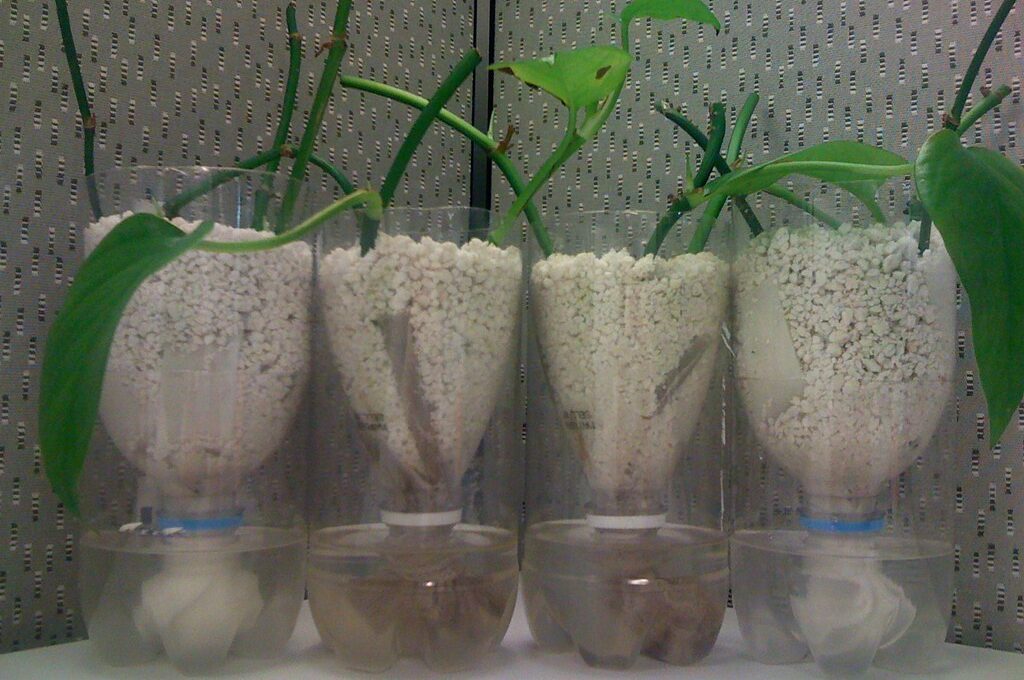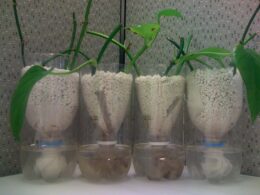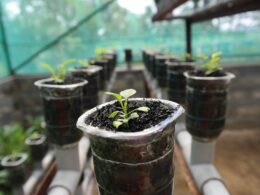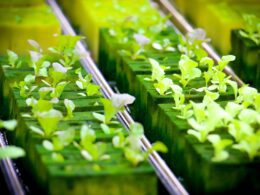If you’re considering starting a hydroponic garden, you may have heard about the benefits of using water as a growing medium. However, before you dive in, it’s important to understand the potential disadvantages of this method.
While water hydroponics can be a great way to grow plants, it also comes with its own set of risks and limitations. One of the main disadvantages of water hydroponics is the reliance on electricity. In order to maintain the necessary environment for your plants to grow, you’ll need to invest in equipment such as pumps, lights, and timers.
This means that you’ll need to have a reliable source of electricity, which can be a problem in areas prone to power outages. Additionally, the complexity of the setup can be daunting for beginners, and there’s always the potential for equipment failure, which can be costly and frustrating.
Despite these challenges, many gardeners find that the benefits of water hydroponics outweigh the disadvantages, and with proper planning and care, you can create a thriving garden that produces healthy, delicious crops.
Reliance on Electricity
If you’re considering hydroponics, be aware that relying on electricity is a major concern. Energy consumption is a significant disadvantage of water hydroponics. The use of electricity in hydroponic systems is necessary for the pumps and lights that support plant growth. This means that if the power goes out, your plants could be in jeopardy.
Additionally, the reliance on electricity means that your hydroponic system will have a higher carbon footprint than traditional soil-based gardening. Sustainability is another issue to consider when using water hydroponics. The energy used to power hydroponic systems is often generated from non-renewable sources, such as coal or natural gas. This means that your hydroponic garden may not be as sustainable as you would like.
Additionally, the production of hydroponic equipment, such as pumps and grow lights, requires energy and resources that may not be sustainable. While energy consumption and sustainability are major concerns with water hydroponics, there are ways to mitigate these disadvantages.
For example, you can use renewable energy sources, such as solar or wind, to power your hydroponic system. You can also choose to purchase equipment that is made from sustainable materials and has a smaller carbon footprint. By taking these steps, you can reduce the negative impacts of hydroponics on the environment and make your garden more sustainable.
Susceptibility to Power Outages
If you’re using hydroponics that rely on electricity, there’s a risk of crop loss if there’s a power outage. Without power, plants won’t receive the necessary nutrients and light to grow, which can lead to stunted growth or even death.
To prevent this, you may need to invest in backup generators or other forms of alternative power sources.
Risk of Crop Loss
The chance of losing your entire crop is a real concern with this method of hydroponics. Crop management is crucial in water hydroponics, as any issues with the nutrient solution or environmental factors can cause plant death or stunted growth.
In traditional soil farming, there is a buffer of nutrients and moisture that can sustain plants in case of minor issues. However, in hydroponics, any problem can quickly escalate and lead to significant crop loss.
Environmental factors such as temperature, humidity, and light also play a critical role in the success of water hydroponics. If any of these factors are not within the optimal range for the plants, they can suffer stress and ultimately die. This is especially true for temperature, as the water temperature in the nutrient solution needs to be maintained at a specific range for the plants to thrive.
Without proper monitoring and control of these factors, there’s a high risk of crop loss in water hydroponics.
Need for Backup Generators
To ensure uninterrupted growth and prevent power outages from ruining your crops, it’s essential to have backup generators on standby when using water hydroponics. This method of cultivation relies heavily on electricity to maintain a stable environment for your plants.
Here are some reasons why backup generators are a necessity for water hydroponics:
-
Power outages can occur unexpectedly, and without a backup generator, your crops are at risk of not receiving the proper conditions they need to thrive.
-
Backup generators can ensure that your plants receive the required amount of light, water, and nutrients they need throughout the day and night.
-
Having a backup generator on standby can give you peace of mind, knowing that your crops are safe from power outages.
-
While maintenance costs for backup generators can be a bit pricey, it’s a small price to pay compared to the potential loss that can occur without them.
In conclusion, backup generators are a crucial component of water hydroponics. They provide a safety net for your crops, ensuring that they receive the proper conditions they need to thrive. While maintenance costs may be a concern, the benefits of having backup generators far outweigh the potential loss that can occur without them. So, if you’re considering water hydroponics as your method of cultivation, make sure to invest in a reliable backup generator to keep your crops safe and healthy.
Complexity of Setup
If you’re considering hydroponics, it’s important to note that the setup can be quite complex and requires technical knowledge and expertise.
You’ll need to have a good understanding of the equipment you’ll need, as well as how to properly care for your plants.
Additionally, hydroponics can require a significant upfront investment, as you’ll need to purchase lighting, nutrient solutions, and other equipment.
Technical Knowledge and Expertise
Having technical knowledge and expertise is crucial for successfully implementing a hydroponic system. While it may seem like an easy way to grow plants, hydroponics requires a deep understanding of the science behind plant growth and the chemistry of nutrient solutions. Without this knowledge, it’s easy to make mistakes that can harm your plants and ruin your entire crop.
Fortunately, there are plenty of training programs and learning resources available for those who’re interested in hydroponics. These resources can help you learn about everything from selecting the right growing medium to maintaining the perfect pH balance in your nutrient solution.
By taking the time to learn about the technical aspects of hydroponics, you can ensure that your system is set up correctly and that your plants are healthy and thriving.
Upfront Investment Costs
Now that you have a better understanding of the technical knowledge and expertise required for water hydroponics, it’s time to consider the upfront investment costs. While the setup for a hydroponic system may seem simple, it can actually be quite costly.
You’ll need to purchase equipment such as grow lights, pumps, and nutrient solutions, and these can add up quickly. Additionally, you’ll need to factor in the cost of the hydroponic system itself, which can range from a few hundred to several thousand dollars.
Before investing in a hydroponic system, it’s important to conduct a ROI analysis to determine if it’s a financially viable option for you. While there may be upfront costs, hydroponics can offer long term sustainability and cost savings. With proper maintenance and care, hydroponic systems can produce higher yields and faster growth rates compared to traditional farming methods.
However, it’s important to consider all factors before making a decision, including the potential return on investment and the ongoing maintenance costs.
What Are the Reasons for Not Using Hydroponics as a Growing Method?
There are several reasons to avoid hydroponics as a growing method. First, it requires a significant initial investment in equipment and infrastructure, making it expensive for small-scale growers. Second, the system relies heavily on inputs like nutrients and water, which aren’t always environmentally sustainable. Additionally, hydroponics can be complex and time-consuming to set up and maintain, demanding a steep learning curve for beginners. Finally, the reliance on technology means power outages or equipment failures can be disastrous for crops.
Potential for Equipment Failure
You may encounter equipment failures when working with hydroponics, which can be frustrating and costly. Preventative maintenance is key to avoiding equipment failure, but sometimes things still go wrong.
One potential issue is clogged pipes or filters, which can slow down the flow of water and nutrients to your plants. Another issue is malfunctioning pumps, which can lead to uneven watering or even complete lack of water to your plants.
When equipment failures do occur, troubleshooting techniques can help you identify and fix the problem. One important step is to check all connections and make sure everything is properly plugged in. It can also be helpful to take apart your equipment and clean it thoroughly, as buildup of debris can cause problems. Another option is to consult online forums or hydroponics experts for advice on how to fix the issue.
Despite the frustrations of equipment failures, it’s important to remember that hydroponics can still be a rewarding and efficient way to grow plants. By taking preventative maintenance measures and staying on top of troubleshooting, you can minimize the risk of equipment failure and enjoy the benefits of hydroponics. So don’t let the potential for equipment failure hold you back from exploring this exciting growing method.
Limited Crop Variety
If you’re considering water hydroponics, it’s important to know that certain types of plants may be difficult to grow using this method. This is because hydroponics requires a specialized nutrient solution that may not be suitable for all types of crops.
As a result, your crop variety may be limited compared to traditional soil-based farming methods.
Difficulty Growing Certain Types of Plants
Growing some plants in a hydroponic system can be a bit tricky and may require a bit more effort from you. This is because not all plants are suited for hydroponic cultivation.
Some plants are just not meant to grow in hydroponic systems due to their specific nutrient requirements and growth habits. For instance, plants with large root systems, like carrots and potatoes, may find it difficult to thrive in hydroponic setups because they need more space for their roots to grow and develop.
Moreover, some plants may have growth limitations when grown hydroponically. For example, fruit trees and shrubs may not produce the same quality and quantity of fruit compared to when they are grown in soil. This is because the nutrients in hydroponic systems may not be able to mimic the complexity and diversity of nutrients found in soil.
Additionally, some plants may require specific environmental conditions, such as humidity and temperature, which can be difficult to maintain in hydroponic setups. Nonetheless, with proper research, planning, and experimentation, you may still be able to grow a wide variety of plants in your hydroponic garden.
Need for Specialized Nutrient Solutions
Growing certain types of plants can be difficult in hydroponics, but choosing the right nutrient solution can make all the difference. Speaking of nutrient solutions, this brings us to the current subtopic – the need for specialized nutrient solutions in water hydroponics.
Maintaining nutrient balance and pH levels is crucial in water hydroponics management. Failure to do so can result in stunted or dead plants, as well as reduced crop yield. The challenges of nutrient solution management in water hydroponics can be daunting, but with proper attention and care, it can be done.
Here are three things to keep in mind when it comes to nutrient solution management in water hydroponics:
-
Nutrient balance: It’s important to ensure that your plants are getting the right balance of nutrients. Too little or too much of a certain nutrient can have negative effects on plant growth.
-
pH levels: The pH level of your nutrient solution can affect plant growth and nutrient uptake. Make sure to test and adjust pH levels regularly.
-
Crop yield: The impact of nutrient solution management in water hydroponics can be seen in the quality and quantity of your crop yield. With proper management, you can achieve optimal crop yield and quality.
Frequently Asked Questions
How does the electricity consumption of water hydroponics compare to traditional farming methods?
If you’re curious about the electricity efficiency and cost comparison between water hydroponics and traditional farming methods, you may be surprised to learn that hydroponics can be more efficient in terms of electricity use.
Since hydroponic systems provide nutrients directly to plants’ roots, they require less water and fertilizer than traditional farming methods. Additionally, hydroponic systems can be designed to use LED lights that are more energy-efficient than traditional lighting sources.
However, it’s important to note that the initial cost of setting up a hydroponic system can be higher than traditional farming methods. Despite this, the long-term benefits of reduced water usage and higher yields may make water hydroponics a cost-effective option.
Are there any backup systems in place to prevent crop loss during a power outage?
If you’re concerned about potential crop loss during a power outage in a water hydroponics system, don’t worry. There are backup solutions in place to prevent such disasters.
A power generator is one such solution that can keep your crops growing even when the electricity is out. This is an essential investment for any hydroponic farmer who wants to ensure the safety and security of their crops.
With a backup generator, you can rest easy knowing that your plants will continue to thrive even in the face of unexpected power outages.
How long does it typically take to set up a water hydroponics system?
Setting up a water hydroponics system can take anywhere from a few hours to a few days, depending on the complexity of the system and your level of experience.
To get started, you’ll need some basic materials like a container, water pump, air stone, growing medium, and nutrient solution. Once you have everything you need, it’s time to set up the system and start growing your plants.
However, there are some potential challenges you may face along the way, such as pH imbalances or nutrient deficiencies. To avoid these issues, it’s important to regularly monitor your system and make adjustments as needed.
Maintenance techniques like cleaning the system and replacing the nutrient solution will also help keep your plants healthy. If you do run into any issues, there are several troubleshooting strategies you can try, such as adjusting the pH or adding more nutrients.
With the right materials and techniques, you can create a successful water hydroponics system and enjoy fresh, healthy produce all year round.
What types of equipment are most prone to failure in a water hydroponics system?
When it comes to water hydroponics systems, common failures can occur with the equipment used such as pumps, filters, and nutrient injectors. To prevent these failures, regular maintenance is key. You should clean and replace filters, check for leaks, and monitor nutrient levels.
However, if a failure does occur, repair costs can be high. It’s important to consider these cost implications before investing in a water hydroponics system. To minimize the risk of equipment failure and repair costs, proper maintenance is crucial.
Are there any techniques or technologies being developed to expand the range of crops that can be grown using hydroponics?
Looking to the future, hydroponic technology is constantly evolving to expand the range of crops that can be grown. Future technologies are being developed to optimize nutrient delivery and create ideal growing conditions for a wider variety of plants.
With this expansion of crop diversity, we can expect to see more sustainable and efficient farming methods that could potentially alleviate some of the pressures on traditional agriculture. As the demand for locally grown produce continues to increase, hydroponics offers a unique solution that allows for year-round, indoor cultivation of crops.
With continued innovation and investment, the future of hydroponics looks promising for both growers and consumers alike.
Conclusion
Overall, while water hydroponics can be a great way to grow plants, there are some disadvantages that you should be aware of. One of the main drawbacks is that it relies heavily on electricity to power the pumps, lights, and other equipment required to keep the plants growing. This means that if there’s a power outage, your plants could be at risk of dying.
Another issue with water hydroponics is that it can be quite complex to set up and maintain, especially if you’re new to the technique. There’s a lot of equipment involved, and you’ll need to ensure that everything is working properly to avoid any potential problems. Additionally, there’s a risk of equipment failure, which could result in damage to your plants or a complete loss of your crop.
In conclusion, while water hydroponics has its benefits, it’s important to consider the potential disadvantages before deciding to use this technique for your plants. If you’re willing to put in the time and effort required to set up and maintain your hydroponic system properly, you may be able to enjoy healthy, thriving crops. However, if you’re not prepared for the challenges that come with this method of growing, you may be better off exploring other options.









